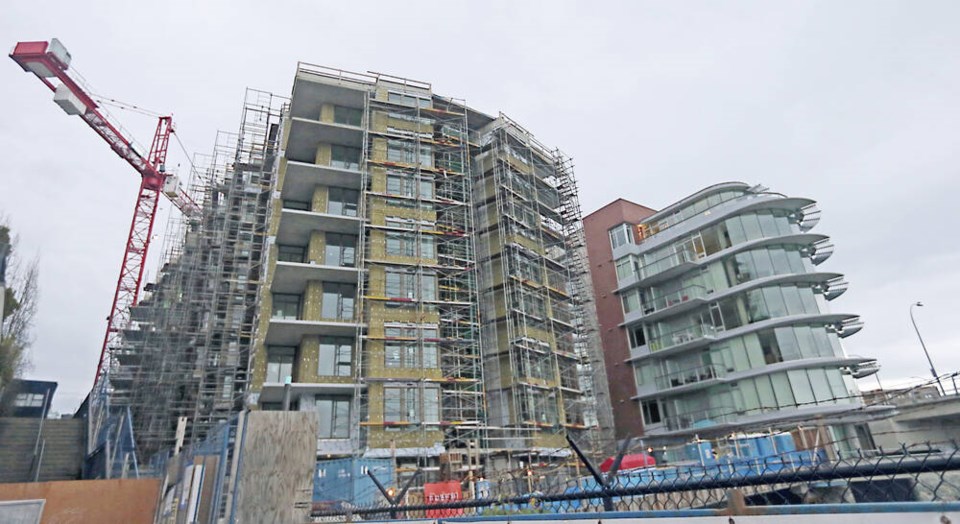Victoria’s unemployment rate improved to 3.4 per cent to close out 2022 on a bit of a high note, as the local economy appeared to maintain its course despite inflation and rising interest rates.
The unemployment rate had been 3.5 per cent in November.
The region’s construction sites and the hospitality industry showed significant gains compared to the same time last year.
According to figures released Friday by Statistics Canada, there were 18,100 people working in construction in the region, up from 14,900 in December 2021, while the accommodation and food-services industry employed 16,500 last month, compared with 11,800 the year previous.
The health-care sector also remained busy, with 35,000 people employed in December, a 3,000-person improvement year-over-year.
The business support service sector shed 4,800 positions over the last year, while education reported 2,000 fewer people employed.
The relative economic strength suggested by the strong employment numbers in Victoria was mirrored across the country. The Canadian economy added 104,000 jobs in December, showing no signs of the slowdown many economists have been anticipating.
That sets the stage for a potential rate hike later this month.
Statistics Canada reported Friday that the country’s unemployment rate fell slightly to 5.0 per cent last month, which marks the third decline in the unemployment rate in fourth months, edging it closer to the record-low of 4.9 per cent reached in June and July.
“You always have to be a little bit careful about reading too much into any single Canadian employment report,” said Douglas Porter, BMO’s chief economist.
“But this is the second time in three months that the economy has cranked out 100,000 new jobs, which is a big number historically.”
In its latest labour force survey, the federal agency said the rise in employment was driven by an increase in full-time work.
The number of employees in the private sector also increased last month, with job gains made across industries.
Meanwhile, employment in the public sector held steady.
Many economists have been expecting a downturn in the economy to show up in fourth quarter economic data in response to high interest rates. However, the job numbers show no sign of an economy slipping.
“For those of us who are calling for at least a shallow recession this year, it of course raises some doubts on that view,” Porter said.
Wages continued to grow at a year-over-year pace above 5.0 per cent for the seventh consecutive month, with wages up 5.1 per cent.
However, wage growth still lags the country’s inflation rate, which was 6.8 per cent in November.
Brendon Bernard, a senior economist with hiring website Indeed, said the broad story for 2022 “of low unemployment and solid job market conditions continued through the final parts of the year.”
Employment among youth aged 15 to 24 rose in December, fully recouping job losses experienced between July and September.
The jobs report also noted that the employment rate among women between the ages of 25 and 54 reached a record high last month.
Despite employment rising on a monthly basis, hours worked held steady in December. Porter said this was likely due to elevated illness rates.
Statistics Canada reported 8.1 per cent of employees were absent due to illness or disability last month, up from 6.8 per cent in November.
The Bank of Canada has previously flagged the country’s tight labour market as a contributor to high inflation.
“The tightness in the labour market is a symptom of the general imbalance between demand and supply that is fuelling inflation and hurting all Canadians,” Tiff Macklem, the governor of the central bank, said during a speech in Toronto in November.
The Bank of Canada has raised its key interest rate seven consecutive times since March, bringing it to 4.25 per cent. It’s hoping higher borrowing costs will slow spending in the economy and chill the pace of price growth.
While economists expect unemployment to rise in response to higher borrowing costs, the labour market has remained resilient over recent months.
The strength of the labour market has fuelled some optimism that the expected economic slowdown may be less painful than a typical recession.
At the same time, Bernard warned that when it comes to employment data, “things can move pretty quickly on a month-to-month basis.”
The Bank of Canada signalled last month a willingness to press pause on its aggressive rate hike cycle, depending on how the economy evolves.
Though BMO still expects there to be another rate hike at the end of the month, Porter said the latest jobs report doesn’t close the debate.
“But I would say at the very least, this strengthens the case for at least one more rate hike in January.”
The Bank of Canada will make its next interest rate decision Jan. 25.
Before then, it will have a reading for inflation in December as well as the results of its business outlook and consumer expectations surveys to take into consideration.



